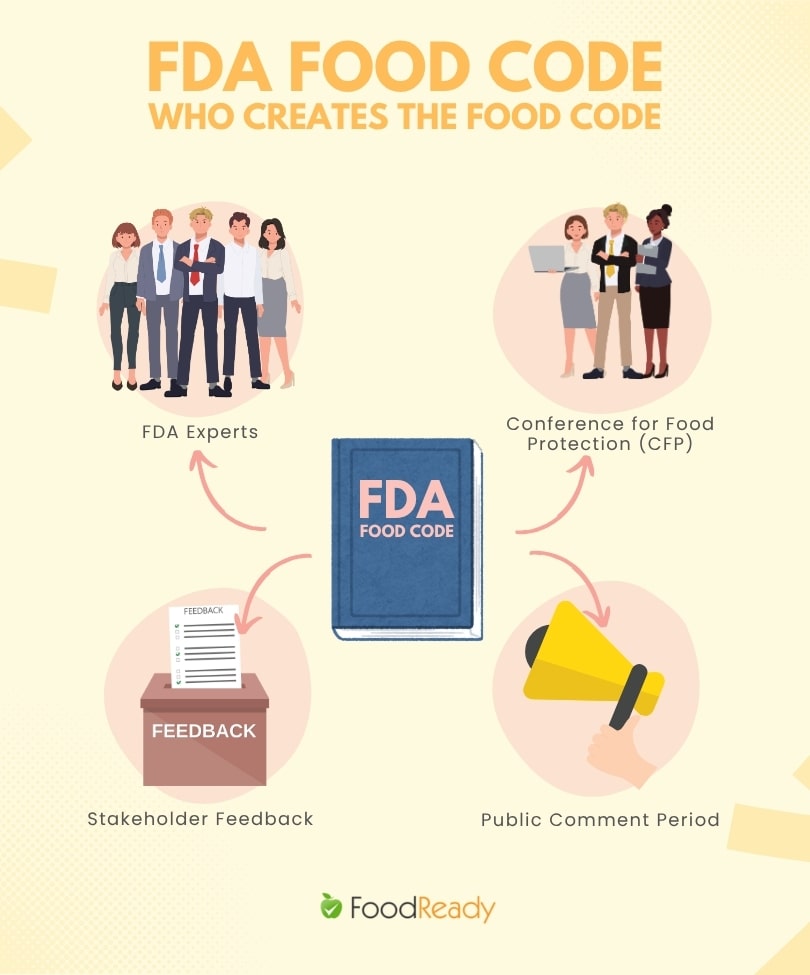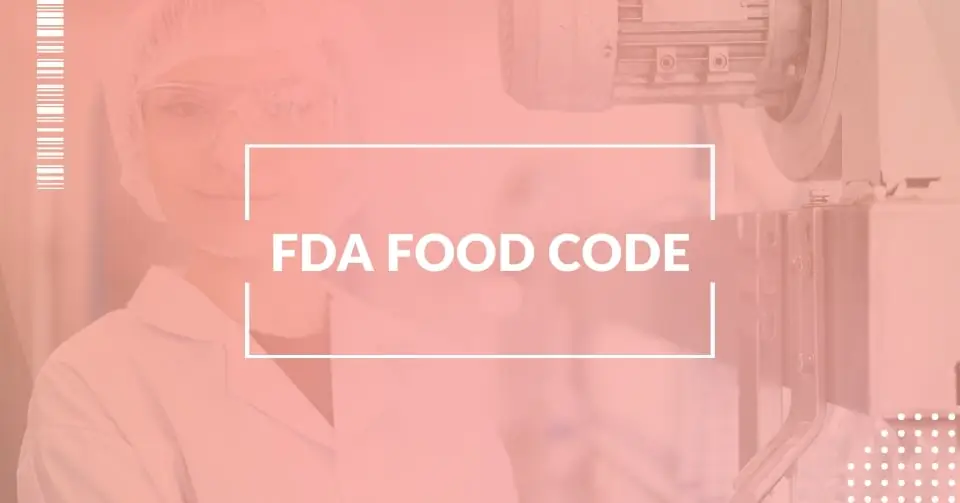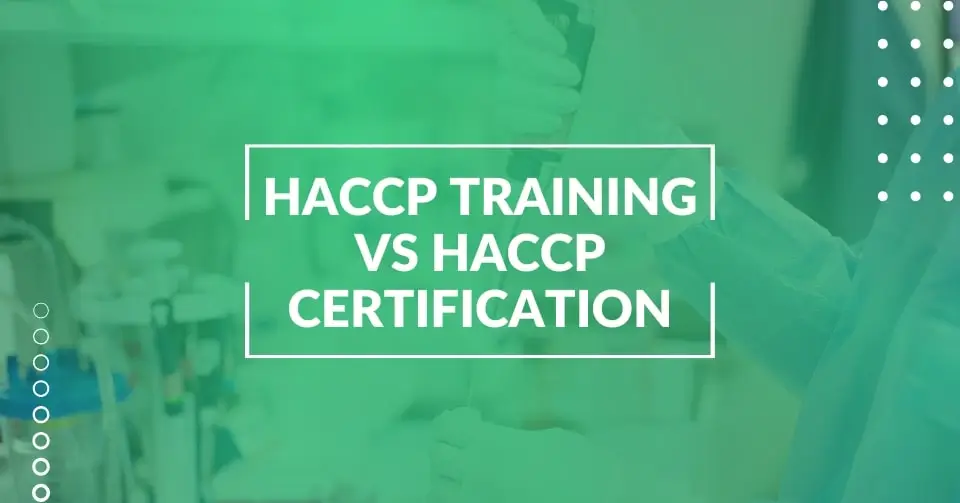Food safety is vital for public health, ensuring our food is safe, nutritious, and free from harmful contaminants. As such, the FDA Food Code helps guide and outline the best practices and regulations for maintaining food safety in the United States.
How does this documentation work?
And what impact does it have on the food industry?
To answer that, this article delves into the creation of the FDA Food Code, its importance, and how innovative technologies can streamline compliance and safety management in the food industry.
What Is the FDA Food Code?
The FDA Food Code was created to protect public health. It maintains proper food handling, preparation, storage, and hygiene practices. It’s a science-based model document that provides guidelines and recommendations.
There is no federal law mandating the Food Code. Yet, it forms the basis of many state and local food safety rules. Consequently, these regulatory bodies implement the code to ensure that food establishments, including restaurants, grocery stores, and food production facilities, follow the highest security standards.
The FDA updates the Food Code regularly. These updates reflect science, industry trends, and new food safety risks.
Updates ensure that guidelines are relevant and effective in addressing modern food safety challenges.
Who Produces the FDA Food Code?
The U.S. Food and Drug Administration (FDA) works with various stakeholders to develop and publish the FDA Food Code.
The process involves:
FDA Experts
The FDA’s team, which includes scientists, food safety experts, and public health officials, directs the drafting and revision process of the Food Code.
Specifically, the latest scientific research and food safety data form the foundation for their recommendations.
Conference for Food Protection (CFP)
The nonprofit Conference for Food Protection is crucial in developing the Food Code. It gathers regulators, industry representatives, academic experts, and consumer advocates to discuss food safety topics and recommend changes to the Food Code.
Stakeholder Feedback
State and local agencies, food businesses, and public health groups all contribute to the process. Stakeholder feedback guarantees that the Food Code functions effectively while maintaining practicality and adaptability across different food service operations.
Public Comment Period
The FDA regularly requests public comments, which allows it to collect insights and address concerns from different stakeholders before making final changes to the Food Code.
The joint efforts involved in developing the FDA Food Code have maintained its status as a highly respected authority on food safety standards across the United States.

What Is the Importance of the FDA Food Code in the Food Industry?
The FDA Food Code is essential for safeguarding public health and ensuring consumers feel confident in the food they eat.
Here’s why it matters:
1. Standardization of Food Safety Practices
First, the Food Code establishes a consistent set of guidelines, which helps maintain uniform food safety practices across regions and establishments.
2. Guidance for Regulators
Second, regulatory agencies use the Food Code as a standard when inspecting food businesses, spotting violations, and making sure everyone follows the rules.
3. Risk Reduction
Third, it tackles potential dangers like foodborne illnesses, cross-contamination, and improper storage, which helps keep consumers safe.
4. Support for Food Businesses
Finally, sticking to the Food Code fosters customer trust and helps avoid expensive penalties or product recalls for those in the food industry—whether manufacturers, retailers, or service providers.
Challenges in Implementing the FDA Food Code
Implementing the FDA Food Code can be quite a challenge for food businesses, even though it has its perks. Here are a few reasons why:
Complex Regulations: For instance, the Food Code is pretty detailed, and grasping all its nuances requires a great amount of expertise and training.
Variability in Adoption: The Food Code isn’t mandatory. As a result, adoption rates and enforcement vary by region
Resource Constraints: Additionally, smaller businesses often find it tough to cover training costs, upgrade equipment, and keep up with compliance checks.
Frequent Updates: Lastly, keeping up with the changes in the Food Code demands ongoing effort and flexibility.
How Can FoodReady Help You Adopt the FDA Food Code?
The FDA Food Code is a detailed set of guidelines designed to promote food safety. It helps food manufacturers, restaurants, and various food businesses meet both federal and state regulations, ensuring that everyone stays compliant and safe.
However, navigating and implementing these rules can be complex and time-consuming. FoodReady is a powerful solution to strengthen compliance, improve food safety management, and simplify implementing the FDA food code.
FoodReady offers AI HACCP tools and real-time monitoring. It centralizes all aspects of food safety management. With automated compliance tracking, With this approach, businesses can ensure that food handling, storage, and preparation procedures meet FDA standards, avoiding violation and risk of punishment.
Moreover, the software also provides audit management tools, helping businesses maintain proper documentation, track inspections, and generate reports quickly.
Another significant benefit of FoodReady is its supplier management system, which ensures that all materials follow food safety rules. By integrating FDA food code requirements into supplier approval, businesses can maintain high-quality standards and avoid contamination risks.
For companies looking to train their employees, To top it off, oodReady also provides food safety training resources, making educating employees on FDA rules and best practices easy. This helps maintain the food security culture and reduces the possibility of non-compliance.
By adopting FoodReady, businesses can meet FDA Food Code requirements, enhance efficiency, reduce risks, and protect consumer health. Ready to simplify your food safety management?
Is Your Food Safety Program Aligned with the FDA Food Code?
Let FoodReady handle the tracking, training, and documentation. Stay ahead of inspections and avoid costly violations.
Conclusion
The FDA Food Code is a cornerstone of food safety in the United States, providing essential guidelines for protecting public health. Produced through a collaborative effort led by the FDA, Thanks to this collaboration, the Food Code reflects the latest scientific advancements and industry practices.
While implementing its recommendations can be challenging, tools like FoodReady make compliance more manageable and efficient.
By leveraging FoodReady.ai, food businesses can streamline their safety management processes, enhance transparency, and build consumer trust. In an industry where safety and reliability are paramount, adopting advanced technology is not just an option but a necessity for long-term success.
FAQs
The FDA Food Code is a comprehensive, science-based document that lays out the best practices for food safety across the United States. It guides state, local, tribal, and territorial agencies to regulate food establishments and safeguard public health.
The FDA Food Code is reviewed every four years, with interim updates made as necessary to tackle new food safety challenges and incorporate scientific advancements.
FoodReady is crafted to assist businesses of all sizes. Its user-friendly design and scalable features make it an excellent fit for small businesses looking to streamline compliance and boost food safety.







